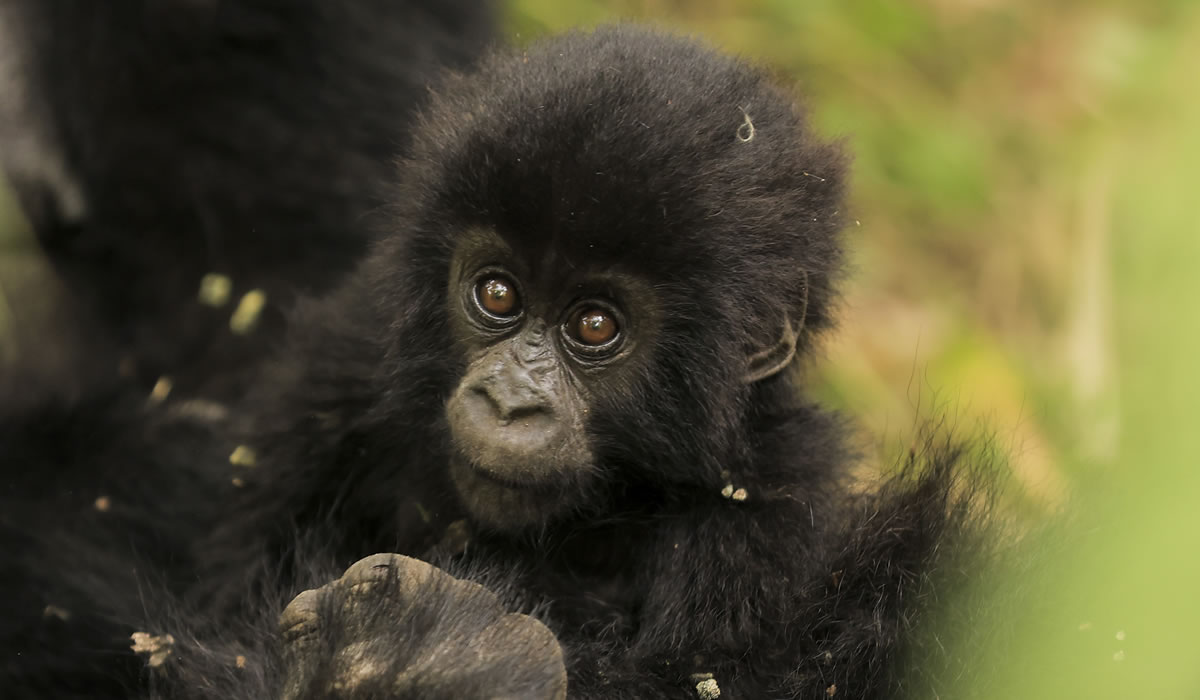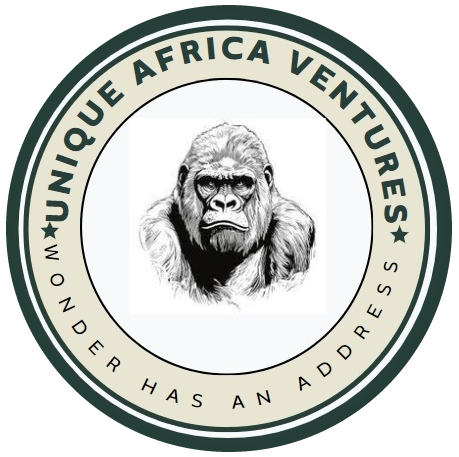Mgahinga Gorilla National Park is one of Uganda’s most remarkable protected areas, offering a unique combination of wildlife, culture, and breathtaking landscapes. Tucked away in the southwestern corner of Uganda, this small but extraordinary park covers just 33.7 square kilometers, making it the smallest national park in the country. Despite its size, Mgahinga is rich in biodiversity and is part of the larger Virunga Conservation Area that spans Uganda, Rwanda, and the Democratic Republic of Congo. The park is most famous for being home to the endangered mountain gorillas and golden monkeys, but it also boasts volcanic mountains, ancient forests, and vibrant cultural experiences with the Batwa people.

Mgahinga Gorilla National Park was established in 1991 to protect endangered species and to conserve the unique ecosystem of the Virunga Mountains. It derives its name from “Gahinga,” a local word that means “pile of volcanic stones,” a reference to the region’s volcanic origins. The park is dominated by three dramatic volcanoes; Mount Muhabura, Mount Gahinga, and Mount Sabyinyo, all of which are part of the great Virunga range. These peaks form a striking backdrop to the park and offer adventurous visitors opportunities for hiking and mountain climbing.
Gorilla Trekking in Mgahinga
The highlight of any visit to Mgahinga Gorilla National Park is gorilla trekking. The park is home to the Nyakagezi gorilla family, which has been habituated for tourism. Unlike Bwindi Impenetrable National Park, where multiple gorilla groups are spread across four sectors, Mgahinga offers a more exclusive and intimate gorilla trekking experience since only one family is tracked. This means fewer visitors, smaller groups, and a highly personalized encounter with the gorillas.
The trek typically begins early in the morning with a briefing at the park headquarters, followed by a guided hike through dense forest and bamboo zones. Tracking the gorillas can take between two and six hours depending on their location, but the reward is an unforgettable hour spent in the presence of these gentle giants. Watching them feed, groom, and interact within their natural habitat is a humbling experience that connects visitors to one of humanity’s closest relatives.
Gorilla trekking permits for Mgahinga cost the same as in Bwindi, at around 800 USD for foreign non-residents. Permits are limited and should be booked in advance through the Uganda Wildlife Authority or licensed tour operators. Because Mgahinga offers fewer permits daily, availability is more exclusive, which makes the experience even more special.
Golden Monkey Tracking
Mgahinga is also known as the only park in Uganda where visitors can track golden monkeys, a rare and endangered species found in the Virunga Mountains. These playful primates, with their striking golden-orange fur, live in the bamboo forests of the park. Golden monkey tracking is a shorter and less strenuous activity than gorilla trekking, usually lasting about three to four hours. For those who want a deeper experience, the Golden Monkey Habituation Experience allows up to four hours of observation, where visitors can watch researchers and rangers study the monkeys’ behavior.
Seeing golden monkeys adds a unique dimension to a visit to Mgahinga, since very few places in the world offer this activity. Combining gorilla trekking with golden monkey tracking makes Mgahinga a truly exceptional safari destination.
Hiking and Volcano Climbing
Beyond primate encounters, Mgahinga Gorilla National Park offers excellent hiking and volcano climbing opportunities. The park’s three volcanoes each have unique trails leading to their summits, rewarding hikers with breathtaking views of Uganda, Rwanda, and the Democratic Republic of Congo.
Mount Sabyinyo, often called the “Old Man’s Tooth” because of its jagged peaks, is a popular choice for climbers. Its summit lies at the point where all three countries meet, allowing visitors to stand in Uganda, Rwanda, and Congo at the same time. Mount Muhabura, the highest of the three at 4,127 meters, provides a challenging but rewarding climb with a crater lake at its summit. Mount Gahinga, though smaller, is known for its lush bamboo forests and scenic beauty.
For visitors who prefer shorter hikes, the park also offers trails such as the Gorges Trail and the Border Trail, which provide opportunities to explore different habitats, spot bird species, and enjoy the park’s diverse vegetation.
Birdwatching and Biodiversity
Mgahinga Gorilla National Park is a paradise for birdwatchers, with more than 180 recorded bird species, including several Albertine Rift endemics. Species such as the Rwenzori turaco, crowned hornbill, and dusky crimsonwing make the park a hotspot for ornithologists. The combination of forest, bamboo, and alpine habitats supports a wide range of species, ensuring that birding enthusiasts are rewarded at every turn.
In addition to gorillas and golden monkeys, the park is home to other wildlife such as forest elephants, buffaloes, bushbucks, duikers, and various small mammals. The rich biodiversity of Mgahinga reflects its role as part of the wider Virunga ecosystem, which is one of the most ecologically significant areas in Africa.
Cultural Encounters with the Batwa
One of the most enriching aspects of visiting Mgahinga is the opportunity to meet the Batwa pygmies, the indigenous people who once lived as hunters and gatherers in the forest. After being relocated from the park to promote conservation, the Batwa have developed cultural experiences that share their traditions and way of life with visitors.
The Batwa Trail is a guided experience led by Batwa elders, who take visitors through the forest while explaining how they used to hunt, gather medicinal plants, and survive in the wilderness. The trail includes demonstrations of traditional skills, storytelling, and visits to sacred sites such as Garama Cave, which once served as a shelter and meeting place for the Batwa.
Participating in Batwa cultural experiences not only enriches the visitor’s understanding of the region’s heritage but also directly supports the livelihoods of Batwa families, ensuring that conservation and cultural preservation go hand in hand.
Accommodation in Mgahinga
Although the park is small, there are several accommodation options in and around Mgahinga that cater to different budgets. Luxury travelers can stay at Mount Gahinga Lodge, which offers beautifully designed cottages with views of the volcanoes and top-quality service. Midrange options include Amajambere Iwacu Community Camp, which provides simple yet comfortable facilities while supporting local community initiatives. Budget travelers can find affordable campsites and guesthouses in nearby Kisoro town.
Staying close to the park ensures easy access to trekking activities and allows visitors to immerse themselves in the tranquility of the Virunga landscapes.
Accessibility and Best Time to Visit
Mgahinga Gorilla National Park is located about 510 kilometers from Kampala, a journey that takes approximately 8 to 10 hours by road. The park can also be accessed from Kigali, Rwanda, in just 4 hours, making it a convenient option for travelers combining gorilla trekking in both Uganda and Rwanda. For those who prefer flying, domestic airlines like AeroLink operate flights from Entebbe to Kisoro airstrip, which is a short drive from the park.
The best time to visit Mgahinga is during the dry seasons from June to September and December to February, when trails are less slippery and trekking is more comfortable. However, since the park lies in a tropical rainforest and mountainous area, rain can occur at any time of the year. The wet seasons from March to May and October to November offer lush scenery and fewer crowds, but trekking conditions can be more challenging.
Conservation and Community Involvement
Mgahinga Gorilla National Park plays a crucial role in the conservation of endangered mountain gorillas and golden monkeys. Strict regulations, such as limiting visitor numbers and maintaining safe distances from primates, help reduce stress and disease transmission. The Uganda Wildlife Authority works closely with conservation organizations and local communities to protect the park’s ecosystem.
Revenue-sharing programs ensure that surrounding communities benefit from tourism, funding schools, health facilities, and infrastructure projects. This community involvement has reduced poaching and fostered a sense of ownership among locals, creating a sustainable model for conservation.
Why Visit Mgahinga Gorilla National Park
Mgahinga Gorilla National Park may be the smallest in Uganda, but it offers some of the most extraordinary experiences in Africa. From intimate gorilla encounters and rare golden monkey tracking to challenging volcano hikes and rich cultural exchanges with the Batwa, every moment spent here is unforgettable. Its scenic landscapes, biodiversity, and accessibility from both Uganda and Rwanda make it an ideal destination for travelers seeking adventure, wildlife, and cultural immersion.
For anyone planning a Uganda safari, Mgahinga provides a perfect complement to Bwindi Impenetrable National Park and Queen Elizabeth National Park. It is a place where conservation, culture, and adventure come together, creating a truly authentic and transformative travel experience.
